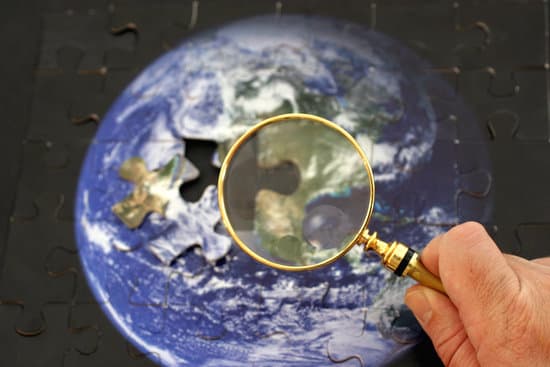The mysteries of the universe have fascinated humanity for centuries, and each year, new discoveries expand our understanding of space. This year has been no exception, with groundbreaking revelations that have captured the world’s attention. From detecting new exoplanets to uncovering the secrets of black holes and the potential for extraterrestrial life, 2025 has been a year of remarkable achievements in space exploration. These discoveries not only fuel scientific advancements but also ignite public interest and inspire future generations of explorers.
The Most Viral Space Discoveries of 2025
1. The Closest Earth-like Exoplanet Discovered
One of the biggest headlines this year was the discovery of an Earth-like exoplanet located just 12 light-years away. Scientists using NASA’s James Webb Space Telescope (JWST) identified a planet in the habitable zone of its star, raising the possibility of liquid water and, potentially, life. The exoplanet, named Kepler-452c-II, exhibits atmospheric conditions similar to Earth and is now a prime target for further exploration.
Key Points:
- Located just 12 light-years away, making it relatively close in astronomical terms.
- Positioned within the habitable zone, allowing for stable water conditions.
- Atmospheric analysis suggests the presence of oxygen and nitrogen, key components for life.
2. First Ever Direct Image of a Supermassive Black Hole’s Magnetic Fields
Black holes have long been a subject of fascination, and this year, astronomers achieved an unprecedented feat: capturing the first-ever direct image of a supermassive black hole’s magnetic field structure. This discovery, made possible by the Event Horizon Telescope, has provided valuable insights into how black holes consume matter and release powerful jets into space.
Key Points:
- The image reveals the intricate structure of a black hole’s magnetic fields.
- Supports the theory that magnetic fields play a crucial role in black hole activity.
- Enhances our understanding of how black holes influence their surroundings.
3. Water Found on an Asteroid in Our Solar System
In a surprising discovery, a NASA mission detected traces of water on an asteroid in the main belt between Mars and Jupiter. This finding suggests that water, a key ingredient for life, might be more widespread in the solar system than previously thought. The asteroid, Ryugu-II, was analyzed using robotic landers, confirming the presence of frozen water and organic molecules.
Key Points:
- Confirms that asteroids may have contributed to delivering water to Earth.
- Organic molecules suggest possible prebiotic chemistry beyond Earth.
- Boosts the search for habitability in the solar system.
4. Mysterious Radio Signals from Deep Space
Astronomers detected a new set of Fast Radio Bursts (FRBs) from a distant galaxy, some of which repeated in a regular pattern. These highly energetic signals, originating from billions of light-years away, remain one of astronomy’s biggest mysteries. While some scientists suggest they could be natural astrophysical processes, others speculate on potential extraterrestrial origins.
Key Points:
- Signals come from billions of light-years away, indicating unknown cosmic events.
- Some FRBs appear in regular patterns, fueling speculation about intelligent origins.
- Could help us understand magnetars, neutron stars, and other extreme objects.
5. NASA’s Moon Mission Discovers Unexpected Lunar Ice Deposits
NASA’s Artemis III mission to the Moon brought back fascinating data, confirming the existence of significant ice deposits near the lunar south pole. This discovery has major implications for future lunar colonization, as the ice could be used for drinking water, oxygen production, and even fuel generation.
Key Points:
- Large quantities of ice were found in permanently shadowed craters.
- Increases the feasibility of long-term human settlement on the Moon.
- Could serve as a vital resource for deep-space exploration.
6. The Launch of the First Space Hotel
In a move straight out of science fiction, the first-ever commercial space hotel successfully launched into orbit this year. Designed to accommodate tourists, researchers, and astronauts, the hotel is an engineering marvel, featuring artificial gravity, breathtaking Earth views, and cutting-edge technology. Space tourism is now officially a reality for those who can afford it!
Key Points:
- Represents a major milestone for the space tourism industry.
- Designed with artificial gravity technology for comfort.
- Expected to pave the way for future orbital space stations.
7. Discovery of a Rogue Planet with an Atmosphere Similar to Earth
Astronomers uncovered a rogue planet—a planet that drifts freely through space without a host star—that has an atmosphere strikingly similar to Earth’s. Unlike previous rogue planets that lacked atmospheres or had extreme conditions, this discovery suggests that habitable planets could exist outside traditional solar systems.
Key Points:
- Challenges traditional notions of planetary formation and habitability.
- Possesses an atmosphere with oxygen, nitrogen, and traces of water vapor.
- Opens up new possibilities for planetary science and astrobiology.
8. AI-Powered Telescope Detects Thousands of Unknown Objects
Advancements in artificial intelligence have revolutionized space observation. An AI-powered telescope launched this year has identified over 10,000 new celestial objects, including asteroids, exoplanets, and previously unknown star systems. This breakthrough demonstrates how AI is accelerating space discovery at an unprecedented pace.
Key Points:
- AI automation enables faster and more accurate space observations.
- Helps track near-Earth objects that could pose future threats.
- Supports ongoing research on the formation and evolution of galaxies.
Conclusion
This year’s space discoveries have expanded our knowledge of the universe in ways that were once thought impossible. From finding new planets and black hole secrets to uncovering water sources in space, 2025 has been a year of remarkable scientific milestones. These discoveries not only fuel curiosity but also shape the future of space exploration, opening doors for human expansion beyond Earth. As technology advances, the coming years promise even greater revelations, bringing us closer to understanding our place in the cosmos.

